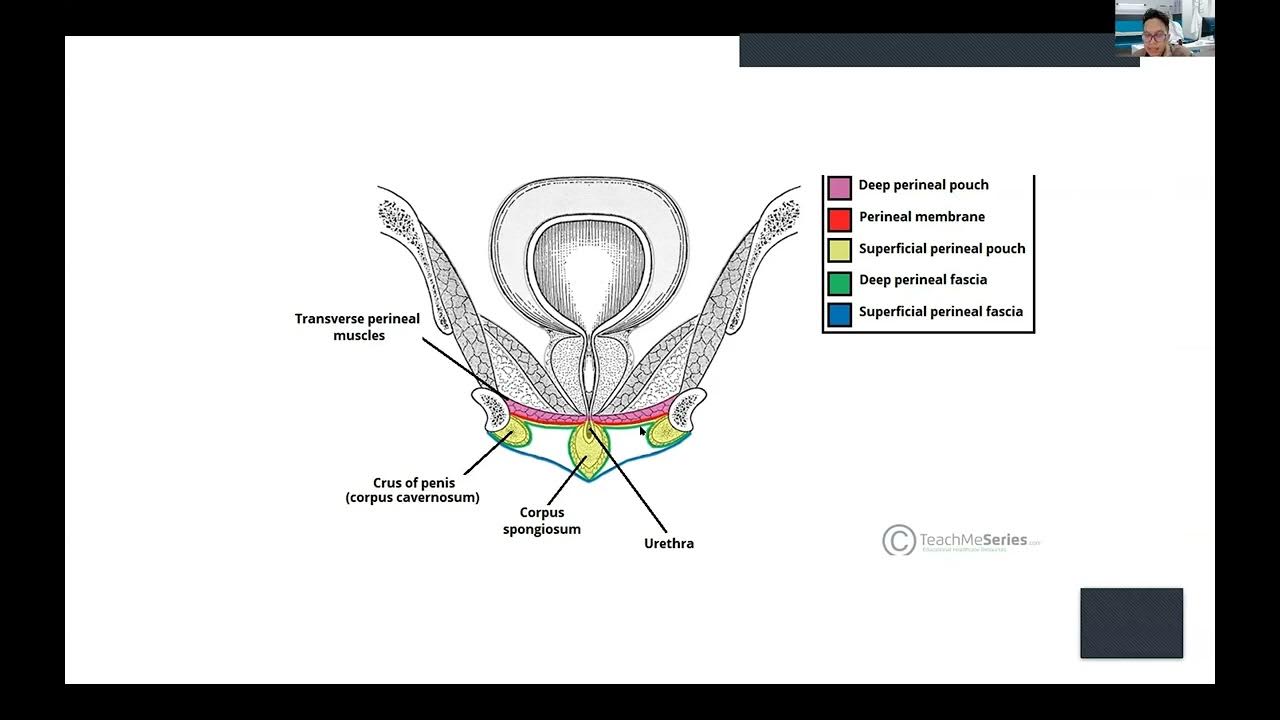Reflexo da Defecação | Fisiologia na Clínica
Summary
TLDRThis video provides an in-depth explanation of the defecation reflex, focusing on the anatomy and coordination of the anal sphincters. It covers the roles of both the involuntary internal sphincter and the voluntary external sphincter, emphasizing how the parasympathetic and somatic nervous systems control these muscles. The script details how the body detects the need to defecate through rectal distension, triggering a complex reflex that involves both unconscious and conscious control. The process concludes with the relaxation of the sphincters, allowing the passage of feces. The video offers a clear and detailed overview of the physiological mechanisms behind defecation.
Takeaways
- 😀 The defecation reflex involves the interaction of various muscles, nerves, and physiological processes, including the internal and external anal sphincters.
- 😀 The internal anal sphincter is a smooth muscle that remains contracted due to its basal tone, which helps retain feces.
- 😀 The external anal sphincter is skeletal muscle and remains contracted through voluntary control provided by the pudendal nerve.
- 😀 The process of defecation begins with the movement of feces through the intestines, which eventually reaches the rectum and causes it to stretch.
- 😀 Sensory neurons detect the stretching of the rectum and send signals to the spinal cord (S2-S4) to initiate the defecation reflex.
- 😀 The parasympathetic nervous system, via the pelvic splanchnic nerve, releases acetylcholine to relax the internal anal sphincter, allowing feces to pass.
- 😀 The external anal sphincter requires voluntary control to relax, which involves inhibiting the pudendal nerve’s continuous contraction.
- 😀 The brain, specifically the motor cortex, plays a role in controlling the external anal sphincter during defecation by inhibiting the pudendal nerve.
- 😀 The coordinated interaction between the parasympathetic and voluntary nervous systems ensures efficient and controlled defecation.
- 😀 The entire defecation process is a well-orchestrated physiological event that involves both involuntary and voluntary control mechanisms.
Q & A
What is the role of the internal anal sphincter in the defecation process?
-The internal anal sphincter, made of smooth muscle, maintains a constant contraction due to its basal tone. This contraction prevents the uncontrolled loss of feces and ensures that the contents remain in the rectum until the appropriate time for defecation.
How does the internal anal sphincter relax during defecation?
-The internal anal sphincter relaxes through a parasympathetic nerve stimulation. A nerve originating from the S2-S4 regions of the spinal cord releases acetylcholine, which relaxes the smooth muscle of the internal anal sphincter, allowing the feces to pass through.
What is the difference between the internal and external anal sphincters?
-The internal anal sphincter is made of smooth muscle and operates involuntarily, while the external anal sphincter is composed of skeletal muscle and is under voluntary control, meaning it can be consciously contracted or relaxed.
What keeps the external anal sphincter contracted?
-The external anal sphincter remains contracted due to the continuous activity of the pudendal nerve, which is a motor neuron that maintains its contraction voluntarily.
How is the contraction of the external anal sphincter relaxed?
-To relax the external anal sphincter, the activity of the pudendal nerve is inhibited. This interruption of motor signaling from the cortex allows the external sphincter to relax, facilitating defecation.
What triggers the process of defecation at the physiological level?
-Defecation is triggered when fecal matter reaches the rectum, causing the rectal wall to distend. This distension is detected by sensory neurons, which send signals to the spinal cord and trigger a series of events leading to the relaxation of the sphincters and the voluntary decision to defecate.
What is the role of the peristaltic waves in the defecation process?
-Peristaltic waves are responsible for pushing the fecal matter through the large intestine, from the descending colon to the rectum. This movement helps bring the feces into the rectum, where distension will eventually trigger the defecation reflex.
How does the body become aware of the need to defecate?
-The body becomes aware of the need to defecate when the distension of the rectal wall becomes significant enough to send strong afferent signals to the brain, specifically to the sensory regions, making the individual conscious of the urgency to evacuate.
What is the role of the brain in the defecation reflex?
-The brain plays a key role in perceiving the urgency to defecate. Once the rectum is sufficiently distended and the internal anal sphincter is relaxed, the brain, particularly the motor cortex, sends descending signals that allow the voluntary relaxation of the external anal sphincter.
How is the reflex of defecation controlled involuntarily?
-The reflex of defecation is controlled involuntarily through the parasympathetic nervous system. Neurons from the S2-S4 regions of the spinal cord stimulate the internal anal sphincter to relax through acetylcholine release, initiating the process of defecation without conscious effort.
Outlines

This section is available to paid users only. Please upgrade to access this part.
Upgrade NowMindmap

This section is available to paid users only. Please upgrade to access this part.
Upgrade NowKeywords

This section is available to paid users only. Please upgrade to access this part.
Upgrade NowHighlights

This section is available to paid users only. Please upgrade to access this part.
Upgrade NowTranscripts

This section is available to paid users only. Please upgrade to access this part.
Upgrade NowBrowse More Related Video

#anatomy of anal canal Part - 1 Anal canal and anal glands

intro la eksternal genitalia wanita_Tegar Fitriyana Sukaya Karso, dr.

Pelvic Diaphragm and Perineum M1 Perineum SDV

Anatomi Lengkap Sistem Pencernaan (Traktus Digestivus / Alimentary Tract) | Sistem Pencernaan

Haemorrhoids (Hemorrhoids) - Overview (pathophysiology, investigations and treatment)

Anatomi Panggul beserta ukurannya
5.0 / 5 (0 votes)